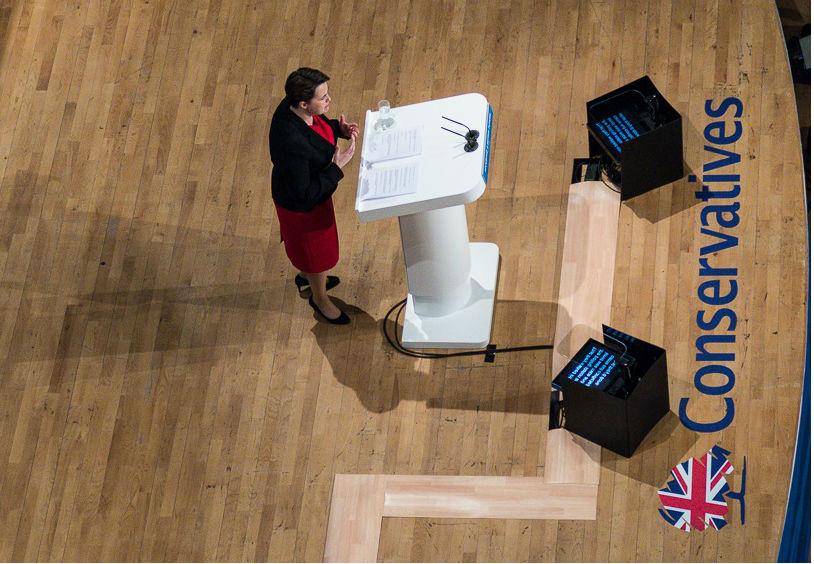A bitter row has broken out between the parties in Scotland over UK Government changes to the child tax credit scheme, which has led to the creation of the “rape clause”.
Under the Conservative policy, as of April 6 only two children will be eligible for tax credits, with a number of exemptions, including one for those born as a result of “non-consensual conception”.

The move was met with near-universal condemnation in the Scottish Parliament, with impassioned speeches from Labour leader Kezia Dugdale and the First Minister urging Conservatives in the chamber to oppose their Westminster colleagues.
In an interview with STV’s Scotland Tonight, Scottish Tory leader Ruth Davidson gave a defence of the exemption, and argued that campaigners were misleading the public.
Davidson’s claim was assessed by the Ferret Fact Service, and we found it to be false.
Evidence
The “rape clause” was originally revealed in then-Chancellor George Osborne’s 2015 budget as part of a wide ranging change to child tax credits, and came into force in April 2017 amid significant opposition both within parliament and without.
Opposition parties and campaigners have argued the “rape clause” means that victims will have to go through additional trauma, and will be forced to “prove” they have been raped to ensure they receive the benefit.
The new system, which applies to children born after April 6, 2017, means that a parent will not get child tax credit or universal credit for a third child, known as the “family cap”, which has also been opposed by many. However there are a number of exceptions.
Buried within the Budget, the clause was uncovered by SNP MP Alison Thewliss, who also started the “Scrap the Rape Clause” campaign.
Anyone who has given birth as a result of being raped must filled out a form, NCC1 4/17, in order to claim child tax credit beyond their first two children.
Ruth Davidson claimed any woman claiming the rape clause exemption only had to “tick a box and put their name to it”.
But the NCC1 4/17 form is eight pages long, and includes a page of details that must be filled in by the claimant, including personal details, a declaration that the non-consensual exception applies to their child, and that the victim is not living with the other parent of the child.
Before filling in this section, a person who is eligible for the exemption must read through the definitions and criteria for non-consensual conception and coercive or controlling behaviour.
Campaign groups and human rights experts say the form requires women to relive their abuse.
In a letter to UK employment minister Damian Hinds, the Equality and Human Rights Commission described its main concerns over the rule.
“The exception, which purports to prevent women from being penalised requires, in our view, invasive reporting requirements of intimate details,” it read.
“Children who may not be aware that they were born of rape may well become aware through this process and through the creation of a record.
“We consider that there has been a failure to fully consider the impact of the implementation of this exemption, including the potentially traumatic process for having eligibility assessed and the risk of re-traumatisation upon survivors of rape.”
There is a significant body of academic research into the negative impact that reliving a traumatic experience can have on victims of abuse, who often suffer from post-traumatic stress disorder (PTSD).
Davidson’s statement also fails to take into account that many women feel unable to report their abuse. Myths and stigma attached to victims of sexual assault as well as a low conviction rate for those accused of rape can explain why many do not come forward.
Furthermore, there is a requirement for the claimant to confirm they are no longer living with the father of the child. Campaigners say this ignores women who remain in coercive relationships, where their safety is in danger.
To claim the tax credit exemption, a woman will be required to speak to a third party certifier unless there is evidence of a conviction for rape, coercive behaviour or a relevant award from the Criminal Injuries Compensation Authority.
Whether Scotland has the infrastructure of third party groups willing to act as certifiers for the “rape clause” has been brought into question, with notable third sector victim support groups stating they will not co-operate.
Ferret Fact Service verdict: False
Ruth Davidson’s claim that the women who require the “rape clause” exemption just have to tick a box and sign their name is inaccurate. Her statement fails to take into account the potential trauma that reliving such an experience can cause, and ignores the difficulty in requiring women to report details of their abuse in order to receive benefits for children in their care.

The Scottish Conservatives did not respond to a Ferret Fact Service request for evidence.
Photo thanks to Gareth Milner,CC BY-SA 2.0
https://www.sharethefacts.co/share/7842b4ad-d859-42f2-8ef4-d6c6337f4859














